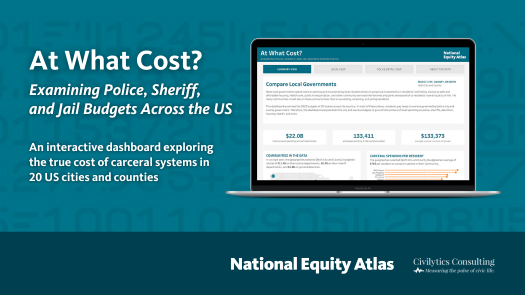Dear Atlas Users,
The Bay Area is one of the most ethnically and racially diverse regions in the nation, but is that diversity reflected in local political leadership? For the past five years, the Bay Area Equity Atlas has tracked data on the diversity of local elected officials. Our analysis of the latest data indicates that people of color still face significant barriers to accessing and exercising political power. Here’s more about political representation in the region and other updates from the Atlas:
Despite Some Progress, Bay Area Elected Officials Remain Disproportionately White
Our latest examination of the diversity of high-level Bay Area elected officials — mayors, city council members, supervisors, and district attorneys — reveals more people of color are running for office and winning local elections throughout the nine-county region. Between 2019 and 2023, the region’s share of elected officials of color increased from 29 percent to 37 percent. Despite this steady increase, people of color remain vastly underrepresented, given that they make up 60 percent of the region’s population. And 25 percent of Bay Area cities still have no people of color represented in their city government.

Exploring the Impact of Unrepresentative Political Leadership on Legislation
How does the lack of diversity among Bay Area elected officials impact housing policy outcomes?
To explore the relationship between real estate interests held by local elected officials and their voting patterns on housing legislation, we reviewed statements of economic interest forms for electeds in a sample of 20 cities and the region’s nine counties. Our review indicates that one in four elected officials have property interests, suggesting that the perspectives and experiences of renters may be underrepresented in local government decision-making.
In Focus: Fostering Diversity in Local Government
People of color account for 73 percent of Antioch’s total population, but only 45 percent of elected officials representing the city, which includes Contra Costa County electeds, are people of color. When Antioch City Councilmember Tamisha Torres-Walker won her first term in 2020, she became the first Black Latina to join the five-member city council. She stepped into office clear on her priorities: to uplift and support communities of color. During her tenure, she has helped pass progressive policies like rent stabilization, guided the creation of a mobile mental health crisis team, and secured funding for transitional housing and violence prevention. Learn more about her story.
Data Update: Bay Area Recovery Dollars Tracker
Cities and counties across the region are still deciding how they’ll invest their remaining share of flexible federal resources from the Coronavirus State and Local Fiscal Recovery Funds (SLFRF) program. Local governments have until the end of 2024 to obligate their SLFRF dollars. To continue bolstering efforts to ensure that policymakers use these funds equitably, we’ve updated the Bay Area Recovery Dollars Tracker to reflect local governments' allocation of SLFRF funds through March 31, 2023. Our assessment of the most recent public data reveals that Bay Area localities have made plans to spend $2.3 billion (70 percent) of the $3.3 billion SLFRF funds allocated to the region, leaving $972 million (30 percent) left to be allocated.
Meet Our New Team Member
You might have already noticed, but we recently added a new member to our team. Please help us officially welcome Ezinne Nwankwo. Shaped by her experiences as an immigrant from Nigeria, Ezinne’s research interests center on the migration and immigrant experiences of Black and African populations. Over the next year, she’ll serve as a postdoctoral research associate for the Atlas partnership, housed within the USC Equity Research Institute (ERI). We’re thrilled to have her on board to support our research and engagements!
Atlas in the News
Atlas data and insights have been featured in several local outlets over the past month. Here’s a brief roundup: Bay City News included data from our race/ethnicity indicator in a piece about efforts to boost political engagement among Bay Area youth ahead of the 2024 elections. As part of local coverage of labor activism, Axios highlighted our January 2023 analysis of the economic challenges facing workers as the region continues to recover from the Covid-19 pandemic. The San Francisco Examiner cited the Atlas in a piece about political representation in the city of San Francisco. Bay City News’ Kiley Russell partnered with the Atlas to leverage our data on the diversity of electeds in a piece about the ongoing underrepresentation of people of color in the halls of power. For more, explore our news archive.
Atlas on the Road
The Atlas team regularly engages with local advocates and organizations. Here’s a brief look at some of our recent presentations: On August 22, Michelle Huang conducted a walkthrough of the Atlas for staff from the City of San Jose. On August 23, Michelle joined SPUR for a panel discussion on how local agencies and organizations are supporting and sustaining the growth of small businesses owned by people of color. On September 20, Ryan Fukumori trained the staff of Richmond Neighborhood Housing Services on using the Atlas, leveraging Richmond and Contra Costa County housing data. Interested in hosting a presentation or training? Contact us at info@bayareaequityatlas.org.
Thank You,
Bay Area Equity Atlas Team




